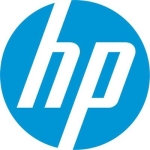We are using Sophos Intercept X for network and system security.
The key factor that attracted me to Sophos Intercept X was the multi-platform. I have multiple clients that have mixed environments of Mac and Windows. I am able to deliver a standard solution, regardless of the platform.
Most of my clients I have central management, they receive updates automatically.
There are not any solutions that are a 10 out of 10. A 10 would be perfect protection with no impact on the performance of the device. This is not the case, there is some impact on the performance of the device.
I have been using Sophos Intercept X since it has been released, it has been many years.
Sophos Intercept X is very stable. However, we had a few issues when Apple released Big Sur. At the time the version of Sophos Intercept X that was running on the Macs wouldn't work properly with Big Sur. We had to install a beta, but that problem was resolved fairly quickly.
Sophos Intercept X is highly scalable.
I have found the Sophos office staff to be far more responsive than other vendors, such as Sonic Wall which is awful. I dealt with them for a number of years and I finally couldn't stand it anymore. I felt that Dell destroyed them.
I have been very pleased with tech support. As a partner, I have access directly to their engineers and developers. Their technical support is superior.
The initial setup is very straightforward.
In the centrally managed environments, you create a downloadable install that you can either email to the end-user or, can have available on thumb drives for customers to install. Once it's installed, it's automatically kept up to date with the most current version.
The price of Sophos Intercept X is competitive.
I'm looking at moving to the EDR version of Sophos because I have a number of clients that have extremely critical data. One of them handles a lot of money for their clients, and the others are lawyers. The security of not only their own information, but their client information, is critical to them. The Intercept X EDR offering is starting to look like it might be a good solution for several of them because of the live monitoring of the threat attempts on their endpoints.
The EDR is an additional managed service that's a component of the antivirus, where depending upon which level you choose, you either have a team that is monitoring responses from your system, or at a higher level, you have dedicated resources that are monitoring your systems. If there's an alert, they immediately respond to that alert and research it, not only quarantine it, the AV quarantines it, but with the EDR function, it alerts the Sophos team that there has been a potential issue, and they'll immediately begin to research it.
My advice to others would be to use centralized management because it makes it much easier to implement, manage, track the installations, and the day-to-day usage. With the central management, you can see every PC or Mac that's connected, any activity, and any issues. You can narrow any issue down to the computer if it's had to quarantine anything. Additionally, you can tell how long it's been since the computer last communicated. It's a very powerful tool, I would recommend it. To the extent their clients are willing to accept the central manager, it is the best option.
I rate Sophos Intercept X a nine out of ten.


















